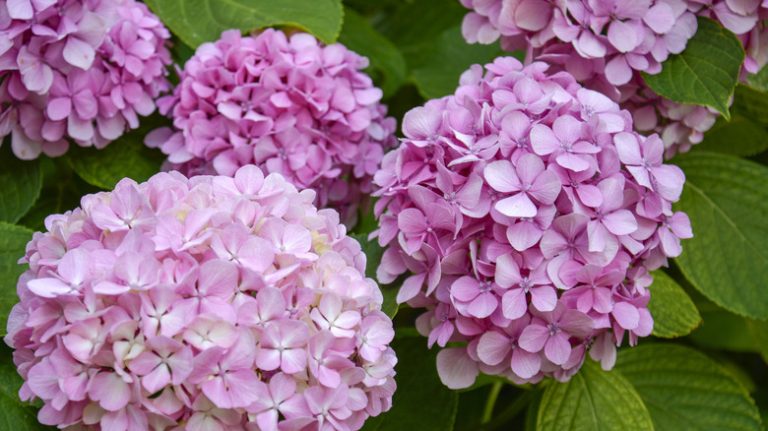Forsythia suspensa Thunb Vahl, also known as weeping forsythia, is a fragrant shrub that originates from China. It is a highly popular flowering plant, widely grown in gardens and landscapes across the world. The shrub grows broadly in a weeping shape, reaching a height of at least 20 feet. It is well-suited for planting in woodland areas or as a beautiful focal point in gardens.
The weeping forsythia blooms in early spring, covering its branches with bright yellow flowers before most other shrubs come into bloom. The flowers have a deeply ovate shape and are featured in clusters of 3 to 4. The fruits of the plant, called gall fruits, begin to form after the flower blooms. They are thin and spreading in nature.
Forsythia suspensa Thunb Vahl thrives in a wide range of soils, making it adaptable to different growing conditions. It is particularly well-suited to play an important role in landscaping, as its weeping form adds a touch of elegance and grace to any area. This shrub is often recommended by sellers of seeds and plants, as it is a highly attractive and easy-to-grow plant that will not disappoint.
In conclusion, Forsythia suspensa Thunb Vahl, or weeping forsythia, is a fragrant shrub with beautiful yellow flowers that blooms early in the spring. It grows in a weeping shape, reaching a tall height and is well-suited for planting in various areas, such as woodlands and gardens. Its adaptability to different soil types makes it a popular choice among gardeners and landscapers. Its striking appearance and easy maintenance make it a must-have plant for any garden enthusiast.
Forsythia suspensa
Forsythia suspensa, also known as weeping forsythia, is a deciduous shrub that belongs to the olive family Oleaceae. It is native to China and widely cultivated in gardens and landscapes around the world.
This shrub can grow up to 20 feet tall and has a spreading nature, with its branches cascading down and creating a weeping effect. The leaves of Forsythia suspensa are ovate in shape and deeply veined. They are yellowish-green in color and release a fragrant scent when crushed.
One of the main features of Forsythia suspensa is its abundant flowering. In early spring, before the majority of other plants have started to bloom, the shrub produces clusters of bright yellow flowers. The buds for these flowers form in the previous year at the base of the plant, and the flowers bloom before the leaves have fully emerged.
The fruits of Forsythia suspensa are small capsules that contain seeds. They are not particularly ornamental and often go unnoticed. The plant can be propagated from these seeds or through cuttings taken from the branches.
Forsythia suspensa is adaptable to a wide range of soils and can grow in both sun and shade. However, it thrives in well-drained, fertile soil and prefers full sun for optimal flowering. In nature, it is commonly found in woodland areas, and it can be used to create a naturalistic look in gardens.
This shrub is a popular choice among gardeners for its early flowering and attractive weeping form. It is especially prized in Missouri, where it is often called the “Missouri Gold” due to its yellow blooms. Forsythia suspensa is also featured in many landscapes and gardens for its graceful and elegant appearance.
In conclusion, Forsythia suspensa is a versatile and attractive shrub that brings beauty and color to gardens. With its weeping branches and early blooming flowers, it is a standout plant that should not be missed.
Forsythia suspensa Thunb Vahl
Forsythia suspensa Thunb Vahl, also known as weeping forsythia, is a shrub that is native to China. It is widely planted in gardens around the world due to its beautiful yellowish flowers.
The weeping forsythia is a deciduous shrub that can grow up to 20 feet tall. It is deeply featured with broadly ovate leaves. The flowers of the forsythia suspensa thunb vahl are bell-shaped and come out before the leaves in early spring. They are one of the first blooms to appear, making it a popular choice for gardens.
The majority of these shrubs grow well in a variety of soils, although they prefer well-drained soil. They can be propagated by seeds or cuttings.
In gardens, the forsythia suspensa thunb vahl is often used as a border plant, as it has a spreading form. It is also frequently planted as a specimen plant or in mass plantings.
The weeping forsythia suspensa thunb vahl is also a popular seller in the floral industry, as its flowers are fragrant and long-lasting. The plant is also often used in landscaping to add color and interest to outdoor spaces.
Overall, the forsythia suspensa thunb vahl is a beautiful and versatile shrub that brings vibrant yellow blooms to gardens and landscapes. Its easy growth and low maintenance make it a popular choice among gardeners.
Weeping Forsythia Shrub Seeds
The Weeping Forsythia Shrub Seeds, also known as Forsythia suspensa Thunb Vahl, is a featured plant in the state of Missouri. This shrub, which grows in most soils and soils well-drained, is a widely growing species in the area.
The Weeping Forsythia Shrub is a tall and spreading plant, reaching a height of at least 20 feet. Its ovate-shaped leaves, which are broadly ovate at the base, add to the beauty of this nature wonder. The shrub is known for its fragrant yellowish flowers, which bloom and begin to play their magic in early spring.
The Weeping Forsythia Shrub is a native of China, where it is commonly called “weeping forsythia.” This name refers to the shrub’s unique growth form, with thin, arching branches that droop and spread. The shrub is also referred to as “suspensa” because of this characteristic.
The Weeping Forsythia Shrub is known for its fruits, which are called gall nuts. These fruits are small and round, and they turn brown when left on the shrub. The majority of shrubs produce these fruits, which are left on the shrub until the next growing season.
The Weeping Forsythia Shrub seeds are highly sought after by garden enthusiasts and nature lovers. This plant brings a touch of elegance and beauty to any garden or woodland area. The seeds can be planted in well-drained soils, and with proper care, they will grow into stunning shrubs.
So, if you are looking to add a touch of nature’s beauty to your gardens or landscapes, look no further than the Weeping Forsythia Shrub seeds. Purchase these seeds from a reliable seller, and witness the magic of these stunning shrubs in your own gardens.
Weeping Forsythia Forsythia suspensa 20 Seeds
The Weeping Forsythia (Forsythia suspensa Thunb) is a plant native to China and is well-known for its beautiful blooms. It thrives in a wide range of soils and is able to tolerate most soil conditions. The plant is called “weeping” because of its drooping branches and spreading form.
This flowering shrub can grow up to 10 feet tall and has a wide canopy that can spread up to 12 feet. Its ovate leaves are deeply veined and its yellowish flowers bloom in the early spring. The buds develop in the winter and typically begin to open as the ground thaws.
One of the most prominent features of the Weeping Forsythia is its fruit, which are called “galls”. The galls are small, ovate-shaped capsules that contain the plant’s seeds. They are initially green, but as they mature, they turn brown and then black. The fruits are thin and papery, and when they mature, they split open to release the seeds.
The Weeping Forsythia is commonly planted in gardens and is a popular choice for landscaping. Its bright yellow flowers are fragrant and attract pollinators, making it a favorite for gardeners. It is also featured in many parks and public spaces for its vibrant blooms and spreading form.
In its natural state, the Weeping Forsythia can be found in woodland areas in China. It is a hardy plant that can tolerate cold winters and hot summers. It is often found growing on hillsides and in valleys.
The Weeping Forsythia is a favorite among gardeners and is a best-selling plant. Its easy maintenance and beautiful blooms make it a popular choice for any garden or landscaping area. Whether planted in a garden or in a public space, the Weeping Forsythia is sure to be a showstopper.
Weeping Forsythia
The Weeping Forsythia, scientifically known as Forsythia suspensa Thunb Vahl, is a widely cultivated shrub that originated in China. It is also commonly called the “Forsythia de Chine,” which means “Chinese Forsythia.”
This shrub is known for its weeping nature, hence the name “Weeping Forsythia.” It grows to be about 20 feet tall and spreads out broadly, forming a beautiful, cascading shape that adds a touch of elegance to gardens and landscapes.
The Weeping Forsythia is most commonly featured in gardens for its stunning yellowish blooms, which appear in early spring before the foliage. These fragrant flowers are borne on bare branches, creating a striking contrast and adding a vibrant burst of color to the surrounding area.
The Weeping Forsythia has oval-shaped leaves that are deeply ovate and thin in nature. The majority of leaves are dark green, providing a lush backdrop to the bright blooms. In autumn, the leaves turn a beautiful shade of yellow before they fall to the ground.
When it comes to the fruits, the Weeping Forsythia produces small capsules that contain seeds. These fruits are not typically seen as the shrub is mainly grown for its ornamental value rather than its fruit production.
The Weeping Forsythia is a hardy shrub that can tolerate a wide range of soil conditions. It prefers well-draining soils and thrives in loamy or sandy soils. It can also tolerate slightly acidic to slightly alkaline soils. This adaptability makes it an excellent choice for a variety of landscapes.
In terms of its natural habitat, the Weeping Forsythia is commonly found in woodland areas in China. It is often seen growing along stream banks, on hillsides, and in other areas with moist conditions.
The Weeping Forsythia is an easy-to-grow plant that requires minimal care. It can be planted in full sun to light shade and is generally drought tolerant once established. The shrub can be pruned to maintain its desired shape and size.
In conclusion, the Weeping Forsythia is a stunning shrub that adds beauty to any garden or landscape. Its weeping nature, fragrant yellowish blooms, and adaptable nature make it a popular choice among gardeners and landscapers.




